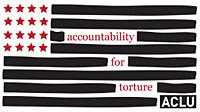This is the first of a three part series on the origins of the Mitchell-Jessen torture program. By its conclusion, we'll have a pretty good picture just how the torture program originated in the White House, or Vice President Cheney's office, and how it came to be implemented via the use of ex-military psychologists.
In order to make these connections, we must first consider the established narrative thus far, exemplified by Scott Shane's new article on Mitchell and Jessen in the 12 August New York Times. The article's description of the Mitchell-Jessen story may work as a prosecutorial brief, but it presents a narrative about the origins of the SERE-inspired torture program that is misleading in certain particulars. As a result, though the article has some interesting new bits of information, and appears to be the result of a great deal of work, it presents an overly simplistic view of how the torture program originated.
In Shane's view, former Survival, Evasion, Escape, Resistance, or SERE psychologists, working many years for the Air Force's survival training programs, were the bad apples who "helped lead the United States into a wrenching conflict over torture..." In almost every case where Shane could have expanded the story, linking Mitchell and Jessen to larger forces and entities, he backed off, blurred over crucial details, or misrepresented important relationships.
By all accounts, James Mitchell and John "Bruce" Jessen have a lot to answer for. Their actions in the Abu Zubaydah interrogation, which included the use of torture techniques of stress positions, sleep deprivation, waterboarding, and others, later made "legal" by the Office of Legal Counsel memos written or represented by John Yoo, David Addington, and Jay Bybee, marks them as guilty of war crimes.
In Shane's version, an entrepreneurial James Mitchell "impressed" the CIA's Cofer Black and Jose Rodriguez, Jr. "by his combination of visceral toughness and psychological jargon." Mitchell had developed a theory, so Shane explains, that a psychological doctrine called "learned helplessness" could be used to make resistant Al Qaeda prisoners comply with interrogator demands. While more experienced interrogators criticized this view, somehow Mitchell prevailed.
Misty Origins
When it comes to the period where the torture program is believed to have started -- sometime in December 2001 -- the New York Times article adds little of substance. Mitchell's theories are said to have been "attracting high-level attention" in CIA circles. How these theories got there is unknown. It could have via a brainstorming session at the home of former American Psychological Association President Martin Seligman. Shane remarks that Mitchell met and fawned over Seligman, who was the originator of the "learned helplessness" theory. But nothing is reported about Mitchell retailing his own theories on reverse-engineering SERE training at this event, and Seligman reports he knew nothing of what Mitchell was planning.
Mitchell's interrogation ideas could have been disseminated through CIA contacts from Mitchell's last known assignment, which according to Shane was with "an elite special operations unit in North Carolina." But the Times article is mum on this, too. In fact, the entire connection between special operations forces and Mitchell and Jessen, or their parent SERE agency, is neglected in the article. For instance, when Shane writes about Mitchell's first contracting company, Knowledge Works, he fails to mention the company was founded in conjunction with Special Operations Psychologist Lt. Colonel John C. Chin.
What follows is the crucial section of the Times article describing the implementation of the Mitchell plan:
At the C.I.A. in December 2001, Dr. Mitchell’s theories were attracting high-level attention. Agency officials asked him to review a Qaeda manual, seized in England, that coached terrorist operatives to resist interrogations. He contacted Dr. Jessen, and the two men wrote the first proposal to turn the enemy’s brutal techniques — slaps, stress positions, sleep deprivation, wall-slamming and waterboarding — into an American interrogation program.
By the start of 2002, Dr. Mitchell was consulting with the C.I.A.’s Counterterrorist Center.... One person who heard some discussions said Dr. Mitchell gave the C.I.A. officials what they wanted to hear....
By the end of March, when agency operatives captured Abu Zubaydah, initially described as Al Qaeda’s No. 3, the Mitchell-Jessen interrogation plan was ready. At a secret C.I.A. jail in Thailand, as reported in prior news accounts, two F.B.I agents used conventional rapport-building methods to draw vital information from Mr. Zubaydah. Then the C.I.A. team, including Dr. Mitchell, arrived.
This explanation of the origins of the torture program leaves a lot to be desired (and really offers nothing new). How did Mitchell's "theories" come to the attention of the CIA? Why did they give Mitchell the assignment of "reviewing" the so-called Al Qaeda manual, which had been in Western hands for at least six months? And how did an assignment to review Al Qaeda resistance techniques become a prospectus for an offensive torture program?
Next up in the series: Going After the Bigger Fish









No comments:
Post a Comment